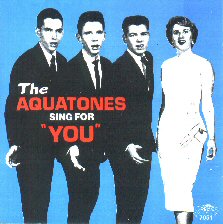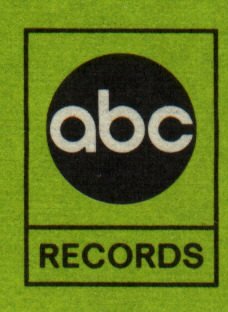 Fargo Album Discography
Fargo Album DiscographyThe Fargo label was started in December, 1957 by Lou Fargo, who at that time was in real estate.
He set up his own label, (Fargo Records, naturally enough), in a small office in the Hotel Forrest at 224
W. 49th Street, New York City. The first single on the label was "A Freshman with a Senior
Dream"/"Excite Me" by Vinnie Monte [Fargo 1000].
Lou Fargo originally signed the Aquatones to a management contract in December, 1957, after hearing
them perform at a talent contest at the high school attended by his son Mike and daughter Linda. After
recording some demos with the group, including "You," and "She's the One for Me," Fargo found entry
into the music world tough sledding. After being rejected by several record labels, he pressed it on his
own label as Fargo 1001. He then traveled to Boston, Baltimore, and Philadelphia to promote the record
with radio stations. Although pushing "She's the One for Me," the flip side, "You," broke as a chart
climber in Philadelphia, and by the time Fargo returned to New York, he had lots of orders. He quickly
made a deal with ABC-Paramount for distribution of his label. After having exposure on Dick Clark's
American Bandstand, the record climbed to #21 nationally, with the group appearing twice on the
show.
The Aquatones started in 1956 as a vocal/instrumental rockabilly group based in Long Island, New York.
They were first called the Rhythm Kings, with Eugene (Gene) McCarthy on clarinet/tenor sax, Dave
Goddard on piano, Larry Vannata on alto and tenor sax, and whoever they could find as a drummer.
One of their early songs, "She's the One for Me," not surprisingly had a rockabilly flavor to it, quite unlike
the vocal ballad "You." The trio went into the studio to record their first demos, along
with a studio drummer and newly-added female singer Lynn Nixon (who became the voice of the
Aquatones most remembered). Not satisfied, Fargo brought the foursome to Bell Studios, where they
recorded "You" again, this time using only their voices while a studio band was hired (including Buddy
Lucas and Dave "Baby" Cortez) to play the instruments. Ultimately, Fargo liked the first version over the
polished studio version, so he used it for the 45.
Although the Fargo label issued about 30 singles and the one album, they never had another hit after
"You." Other artists on the label included Vinnie Monte, Al Green, Howard Marren, Terry Lynn, Bobby
Maxwell & the Exploits, Rosie's Baby Dolls, Dean Randey, the Flames, Phil Allen, the Curios, the
Triangles, the Ideals, Ricky & the Vacels, the Sundowners, Johnnie Cooke, the Execs, Arty Lee, the
Chord 'R Notes, the Vi Dels, the Choralettes, and the Doug Van Beck Trio. Many of the sides have been
reissued on the Relic/Fargo CD Golden Era of Doowops: Fargo Records, which also includes
sides from Fargo's tiny subsidiaries, Wells, Express, and Astra. Fargo's other subsidiary was Decanter
Records.
As far as is known, there was only one album released on the label, but that record is quite collectable. It
is an album by the Aquatones. It is surprising that the album was released a good six years after the
group's hit record, and not unexpectedly, it hit the cutout bins in a hurry. In 1993, Relic Records released
a CD compilation of the group's LP and single material, with many tracks in stereo for the first time.
The Fargo label is light blue with black printing, with "FARGO" above the center hole with a drawing of
three stagecoaches to the left of the logo. Although Lou Fargo went back to real estate in the early
1960s, the label issued singles sporadically until 1964 or so. Putting out the Aquatones album in 1964
was Lou's son Mike Fargo's idea, and the expense without commercial success may have spelled the
end to Fargo Records.
We would appreciate any additions or corrections to this discography. Just send them to us via e-mail. Both Sides Now Publications is an information
web page. We are not a catalog, nor can we provide the records listed below. We have no association
with Fargo Records. Should you be interested in acquiring albums listed in this discography (all of which
are out of print), we suggest you see our Frequently
Asked Questions page and follow the instructions found there. This story and discography are
copyright 2002 by Mike Callahan.
 Back to the ABC-Paramount Records Story
Back to the ABC-Paramount Records Story
 Back to the Discography Listings Page
Back to the Discography Listings Page  Back to the Both Sides Now Home Page
Back to the Both Sides Now Home Page